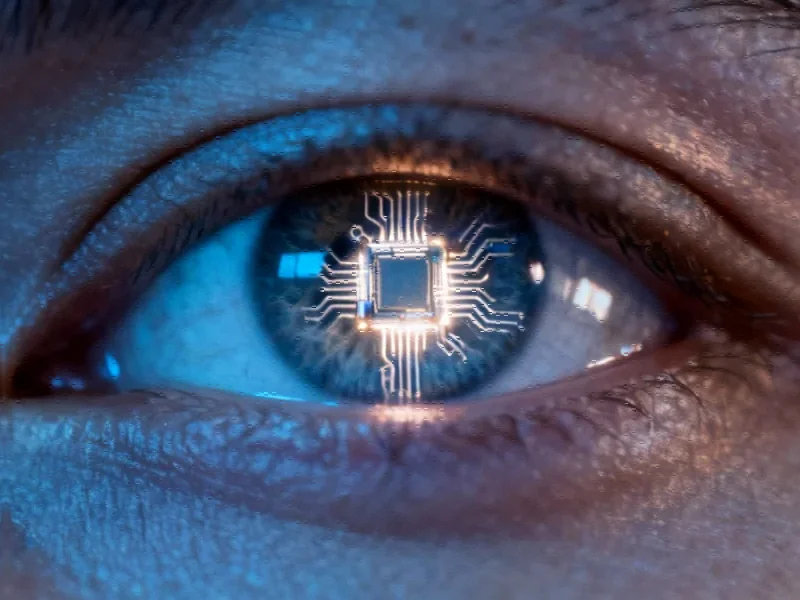Breakthrough in Vision Restoration
In a landmark development for ophthalmology, scientists have successfully developed and tested an innovative eye implant that partially restores central vision in patients blinded by advanced age-related macular degeneration (AMD). The groundbreaking technology represents a significant advancement in medical technology and offers new hope for millions suffering from this degenerative eye condition.
Clinical Trial Results Demonstrate Significant Improvement
According to research published in the New England Journal of Medicine, the implant helped 81% of trial participants achieve clinically meaningful improvements in their vision. The study involved 32 AMD patients suffering from geographic atrophy, an advanced form of the disease that currently has no effective treatment. Participants demonstrated remarkable progress, with average improvements of 25 letters—approximately five lines—on standard eye charts. One exceptional case showed improvement of 59 letters, nearly 12 lines beyond their baseline vision.
Professor Frank Holz, the study’s lead author and chair of ophthalmology at University Hospital Bonn, emphasized the significance: “This study confirms that, for the first time, we can restore functional central vision in patients blinded by geographic atrophy. The implant represents a paradigm shift in treating late-stage age-related macular degeneration.”
How the Vision Restoration System Works
The innovative technology combines several components working in harmony. Patients wear special glasses equipped with a miniature camera that captures real-world images. These images are then projected onto a tiny 2mm by 2mm wireless retinal implant. The implant converts light into electrical pulses that stimulate remaining healthy retinal cells, effectively bypassing damaged areas and transmitting visual information to the brain.
This development represents one of the most significant related innovations in medical prosthetics, joining other advancements in retinal implant technology that are transforming treatment options for vision impairment.
Real-World Impact on Patients’ Lives
The practical benefits extend far beyond clinical measurements. Researchers reported that 84% of implant recipients successfully used their restored vision for everyday tasks at home, including reading numbers and words. Some patients achieved the remarkable milestone of reading entire pages in books—something previously impossible due to their condition.
Dr. José-Alain Sahel, senior author of the study and chair of ophthalmology at the University of Pittsburgh School of Medicine, noted: “It’s the first time that any attempt at vision restoration has achieved such results in a large number of patients. More than 80% of the patients were able to read letters and words, and some of them are reading pages in a book.”
Addressing a Growing Global Health Concern
Age-related macular degeneration represents a significant and growing health challenge worldwide. Geographic atrophy, the specific form targeted by this new technology, affects millions globally and stands as the leading cause of irreversible blindness in older populations. The condition damages the retina—the light-sensitive tissue at the back of the eye—severely impairing central vision essential for recognizing faces, reading, and navigating daily life.
This medical breakthrough comes alongside other significant industry developments that demonstrate how technological innovation continues to transform various sectors, from healthcare to aviation.
Commercial Development and Future Availability
The research received funding from Science Corporation, the U.S. company manufacturing the device based on designs by Stanford University ophthalmology professor Daniel Palanker. The company has submitted applications for clinical use authorization in both the United States and European markets.
While specific pricing details remain undetermined, Science Corporation has committed to establishing a “reasonable and fair price that makes it available to the broadest number of possible beneficiaries.” The final cost will be determined through negotiations with government health agencies and other potential users.
This development in medical technology reflects broader market trends where specialized innovations require careful consideration of accessibility and commercial viability.
Broader Implications for Medical Technology
The success of this retinal implant technology signals a new era in organ prosthetics and neural interfaces. Researchers increasingly focus on developing sophisticated implants for various organs, including the brain, to restore lost physical capabilities. This approach represents a fundamental shift from managing symptoms to actually restoring function.
As with other sectors experiencing transformation, such as the financial industry’s adaptation to new challenges, the medical device field must navigate complex regulatory and commercial landscapes while delivering life-changing technologies.
Future Directions and Potential Applications
The remarkable success of this retinal implant opens several exciting possibilities:
- Expanded applications to other forms of vision loss beyond AMD
- Technological refinement to improve resolution and functionality
- Cost reduction strategies to enhance accessibility
- Integration with other emerging technologies
This innovation in vision restoration technology aligns with broader technological advancements across industries, including the strategic shifts in cloud computing leadership and other recent technology sector developments that demonstrate how established markets continue to evolve through innovation and strategic repositioning.
As research continues and regulatory approvals progress, this vision-restoring technology promises to transform the lives of millions living with AMD, offering not just improved vision but restored independence and quality of life.
This article aggregates information from publicly available sources. All trademarks and copyrights belong to their respective owners.
Note: Featured image is for illustrative purposes only and does not represent any specific product, service, or entity mentioned in this article.



